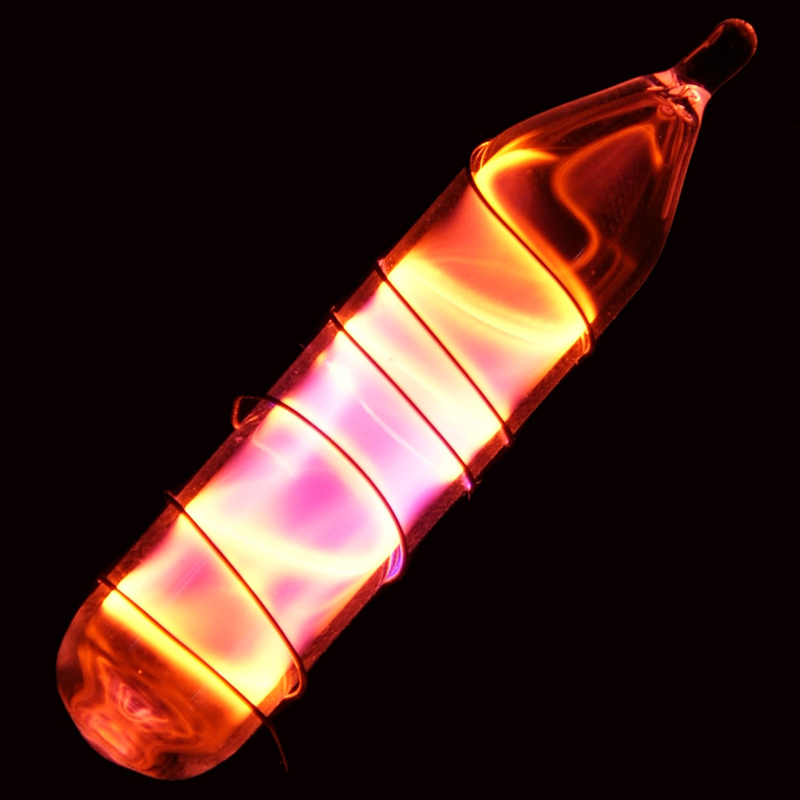Neon
10
Ne
Skupina
18
Perioda
2
Blok
p
Protoni
Elektroni
Nevtroni
10
10
10
Splošne lastnosti
Vrstno število
10
Atomska teža
20,1797
Masno število
20
Kategorija
Žlahtni plini
Barva
Brezbarven
Radioaktivno
Ne
From the Greek word neos, new
Kristalna struktura
Ploskovno centrirana kubična
Zgodovina
Neon was discovered in 1898 by the British chemists Sir William Ramsay and Morris W. Travers in London.
It was discovered when Ramsay chilled a sample of air until it became a liquid, then warmed the liquid and captured the gases as they boiled off.
After 1902, Georges Claude's company, Air Liquide, was producing industrial quantities of neon as a byproduct of his air liquefaction business.
It was discovered when Ramsay chilled a sample of air until it became a liquid, then warmed the liquid and captured the gases as they boiled off.
After 1902, Georges Claude's company, Air Liquide, was producing industrial quantities of neon as a byproduct of his air liquefaction business.
Elektroni po lupinah
2, 8
Razporeditev elektronov
[He] 2s2 2p6
In a vacuum discharge tube, neon glows reddish orange
Fizikalne lastnosti
Faza snovi
Plin
Gostota
0,0008999 g/cm3
Tališče
24,56 K | -248,59 °C | -415,46 °F
Vrelišče
27,07 K | -246,08 °C | -410,94 °F
Talilna toplota
0,34 kJ/mol
Izparilna toplota
1,75 kJ/mol
Toplotna kapaciteta
1,03 J/g·K
Zastopanost v Zemljini skorji
3×10-7%
Zastopanost v vesolju
0,13%

CAS številka
7440-01-9
PubChem CID številka
23935
Atomske lastnosti
Atomski polmer
38 pm
Kovalentni polmer
58 pm
Elektronegativnost
-
Ionizacijski potencial
21,5645 eV
Atomski volumen
16,7 cm3/mol
Toplotna prevodnost
0,000493 W/cm·K
Oksidacijska stanja
0
Uporabe
Neon is often used in brightly lit advertising signs.
It is also used in vacuum tubes, high-voltage indicators, lightning arrestors, wave meter tubes, television tubes, and helium-neon lasers.
Liquid neon is used as a cryogenic refrigerant.
It is also used in vacuum tubes, high-voltage indicators, lightning arrestors, wave meter tubes, television tubes, and helium-neon lasers.
Liquid neon is used as a cryogenic refrigerant.
Neon is not known to be toxic
Izotopi
Stabilni izotopi
20Ne, 21Ne, 22NeNestabilni izotopi
16Ne, 17Ne, 18Ne, 19Ne, 23Ne, 24Ne, 25Ne, 26Ne, 27Ne, 28Ne, 29Ne, 30Ne, 31Ne, 32Ne, 33Ne, 34Ne